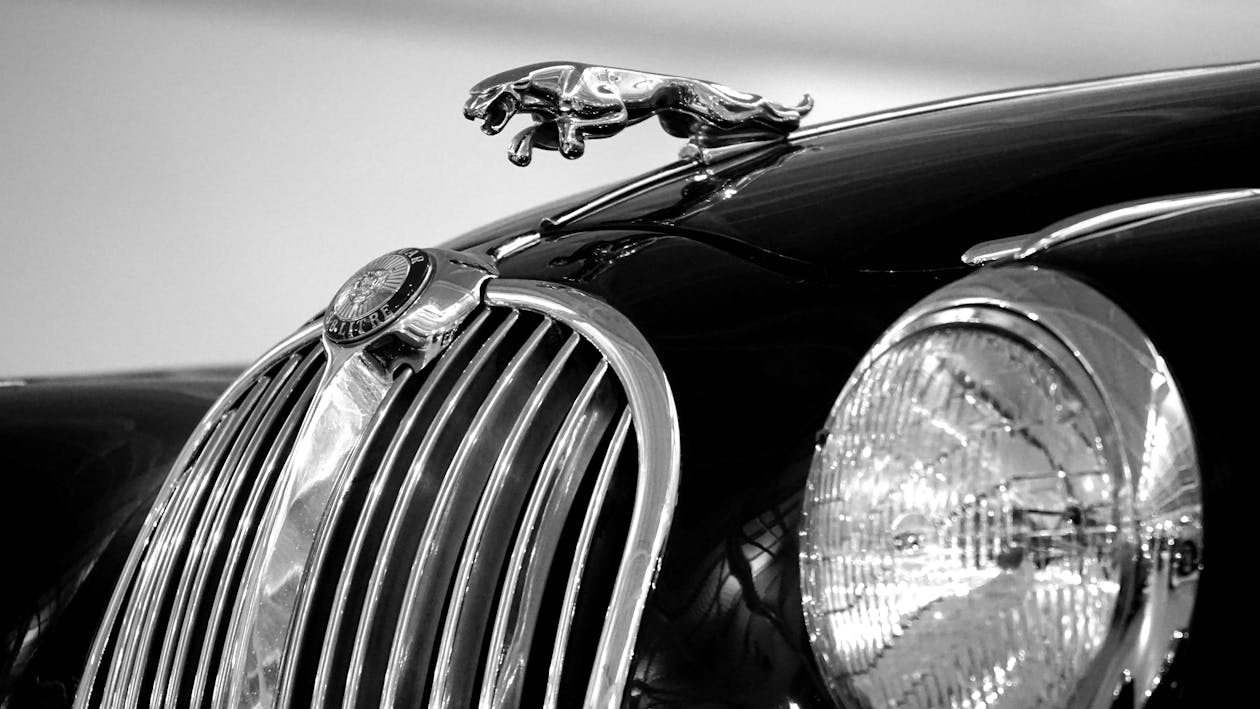Investing in luxury goods

Have you ever thought of your favourite handbag or watch as more than just a fashion accessory? In recent years, investing in luxury goods has become popular, offering investors a potentially lucrative way to grow their money. Investing in luxury goods involves buying items such as handbags, watches, cars and other items in the expectation that their value will increase over time. Unlike shares and other traditional investments, luxury goods have a physical presence, which can provide some investors with psychological security.
At the same time, investing in luxury goods comes with a number of challenges. Buying luxury goods usually requires a large initial investment and selling them can be difficult. In addition, there are maintenance costs, counterfeiting and market risks to consider.
In this article, we will take a closer look at the pros and cons of investing in luxury goods, the most popular luxury goods investment classes, and important factors that every potential investor should consider.
Investing in luxury goods - pros and cons
Luxury shops investing can be a tempting way to diversify your portfolio and potentially benefit. However, as with any investment strategy, it has both advantages and disadvantages. It is important to consider these factors carefully before buying luxury goods as an investment.
Cons
- Large initial investment
Investing in luxury goods usually requires large sums of money. Buying a Hermès Birkin handbag or a Rolex Daytona watch can cost tens or even hundreds of thousands of euros. This makes luxury goods out of reach for many investors.
- Low liquidity
Selling luxury goods can be a complicated and time-consuming process. Unlike shares or other liquid investments, you may not find a buyer immediately when you want to sell your luxury goods. This can cause problems if you need money quickly.
- Maintenance costs
The storage and maintenance of luxury goods may require additional costs. For example, it may be necessary to have a luxury bag professionally cleaned or a watch regularly serviced. These additional costs need to be taken into account when making an investment decision.
- Risk of counterfeiting
There are a lot of fakes on the luxury goods market. If you are not careful, you can buy a fake that has no investment value. Buying luxury goods from trustworthy sellers and making sure they are authentic is crucial.
- Price subjectivity
The price of luxury goods depends largely on brand, rarity, condition and even fashion trends. Unlike shares or real estate, the price of luxury goods may not be as transparent or stable. A small change in these factors can have a significant impact on the value of an item.
- Uncertainty about future prices
Predicting the future value of luxury goods is difficult. Unlike shares, whose value is heavily influenced by company performance, there is more subjectivity in determining the value of luxury goods. Changes in fashion trends or economic factors can have a significant impact on the demand and prices of luxury goods.
Benefits
- Tangible assets
Unlike shares and other financial instruments, luxury goods have a physical existence. This can provide investors with a degree of psychological security and control over their investments. During periods of economic turbulence, when stock markets can fluctuate, owners of luxury goods can feel more secure because their items are still there.
- Potential increase in value
Some categories of luxury goods have historically shown a steady upward trend in value. Classic Hermès Birkin handbags, Rolex watches and rare vintage cars are just a few examples of luxury goods that have risen significantly in value over the years. For collectables, demand can outstrip supply, supporting price increases.
- Diversification
Adding luxury goods to your investment portfolio can help diversify it and reduce overall risk. Luxury commodity prices may not always move in the same direction as the stock market, offering investors some protection against market volatility. Diversification helps to hedge risk and ensure overall portfolio stability.
- Inflation protection
Some luxury goods may offer some protection against inflation. If general prices rise, the value of luxury goods may also rise, preserving investors' purchasing power. As luxury goods are in limited supply and demand for them tends to remain or grow, they can be a good way to cushion the effects of inflation.
- Emotional value
For some investors, luxury goods have an emotional value as well as a financial one. For example, owning a rare watch or a designer handbag may offer a symbol of status or be a family heirloom that can be passed down.
Popular luxury goods investment classes
Handbags
Investment factors
When investing in luxury handbags, brand reputation, materials, craftsmanship and rarity are important factors. Bags from well-known brands, made from quality materials and by skilled craftsmen, tend to retain and increase in value over time. Rare and collectible bags are particularly sought after and can offer investors significant returns.
Hermès Birkin
Hermès Birkin is one of the most coveted luxury handbags in the world, and values have risen significantly in recent years. The popularity of these bags is due to Hermès' top craftsmanship, rare materials and exclusive nature. The value of the birkins is also helped by the artificial scarcity of Hermès, which produces them in limited quantities.
Chanel classic handbags
Chanel is another popular luxury brand, with classic models such as the 2.55 and Classic Flap, have a strong tracking value. These bags are renowned for their elegant design, timeless style and quality materials. Chanel is favoured by fashion lovers and investors alike, ensuring stable value and good liquidity.
Louis Vuitton limited editions
Louis Vuitton is renowned for its limited edition handbags that can appreciate in value over time. These bags are often created in collaboration with renowned designers or artists and feature unique designs and materials. Louis Vuitton's limited edition handbags are coveted collectors' items that can offer a good return on investment.
Watches
Investment factors
When investing in luxury watches, the brand's reputation, mechanical movement, rarity and condition are important factors. Watches from well-known brands that have a sophisticated mechanical movement and are in good condition tend to retain and increase in value over time. Rare and collectible timepieces are particularly desirable and can offer investors significant returns.
Rolex sports watches
Rolex sports watches, such as the Daytona and Submariner, are popular investment options with strong demand and low supply. These watches are renowned for their durability, accuracy and timeless design. The value of Rolex sports watches is also helped by the artificial scarcity, as Rolex produces them in limited quantities.
Patek Philippe and Audemars Piguet
These Swiss high-end watchmakers create highly prized and collectible timepieces that are likely to rise in value. Patek Philippe and Audemars Piguet watches are renowned for their sophisticated mechanics, luxurious materials and exclusive designs. These timepieces are coveted by watch enthusiasts and investors alike, ensuring a stable value and good liquidity.
Vintage watches
Vintage Rolexes and watches from other recognised brands can be a valuable investment if they are in good condition and rare. Vintage watches offer investors unique and historical value. Their rarity and the growing demand for collectible watches contribute to their value.
Cars
Investment factors
When investing in luxury cars, the country of production, brand reputation, model rarity, year of production, mileage and overall condition of the car are important factors. Classic and limited-production cars tend to hold or even appreciate in value over time.
Classic and rare cars
Car makers with certain model ranges, such as Ferrari, Porsche and Aston Martin, occasionally produce special limited editions or particularly powerful models. These cars are highly sought-after collectors' items and can appreciate in value considerably.
Vintage cars
Well-kept vintage cars in original condition can be a good investment. Some popular vintage car brands include Mercedes-Benz, Jaguar and Chevrolet. The value of these cars is influenced by rarity, the significance of the model in history and the condition of the vehicle.
Competition cars
Cars used in competitions or associated with well-known racers can be valuable investments. The value of these cars is influenced by their uniqueness, the history of the races and the condition of the car.
Other investment classes
Investment factors
Luxury goods include not only handbags, watches and cars, but also a range of other items that could be a potential investment. These include, for example:
Art and antiques
Original works of art and unique antiques can appreciate significantly over time.
Wines and alcohol
Limited-production or rare wines and spirits can be a good investment, especially if they are stored properly.
Themes and jewellery
High-quality diamonds and unique jewellery can maintain or even increase in value over time.
Investment risks
Investing in luxury goods can be an attractive option, offering potentially higher returns than traditional investment vehicles. However, it is important to carefully consider the risks and do thorough research before investing. Like other forms of investment, investing in luxury goods involves risk. Some of the main risks include:
Market proximity
The luxury goods market can be volatile and dependent on economic factors. During a downturn, the value of luxury goods may fall.
Counterfeiting
When it comes to luxury goods, there is a high risk of being caught by counterfeiters. It is important to buy from a reputable shop and to make sure you check the authenticity of the item.
Storage
Some luxury goods need special storage conditions to preserve their value. This can add costs and complexity for investors.
A strategic approach to investing in luxury goods:
The world of luxury goods offers a wide range of investment opportunities, but a strategic approach is key to success. Here are some interesting strategies for different types of investors:
Do you want to buy a specific brand or model? The pleasure of collecting is important, but you also need to consider the investment potential. Check the model's history, production quantities and previous sales prices. Try to find items in good condition and in their original packaging to increase their value.
Do you follow the fashion world and new trends closely? Investing in luxury goods can be an exciting way to profit from trends. Find out which brands or designers are on the rise and which products are causing a stir. Keep an eye out for limited editions and collaborations that could prove valuable in the future.
Do you want a quick return and are you ready to resell your items in the short term? Then focus on limited edition products and hype brands. Study sales trends and monitor online outlets to catch the right moment to sell. However, it's important to be aware of the volatility of the market - a quick rise can mean a quick fall.
Look for classics and brands with a long history of preserving value. For example, Hermès Birkin or Rolex Submariner have shown steady growth over the years. Choose items that are made with quality materials and craftsmanship. Their value is likely to grow even as trends change.
In addition to the strategy: Whichever approach you choose, it is important to do thorough research before making a purchase. Use trusted sources to verify authenticity. Also think about storage costs and, if necessary, insurance. Investing in luxury goods can be exciting and profitable, but a strategic approach and informed decision-making are key to success.
Investing in luxury goods requires a strategic approach. Collectors should research the history and condition of the item. Trendsetters could invest in emerging brands and limited editions. Fast sellers can benefit from hype but need to be aware of market volatility. Value investors choose timeless classics and quality items. Research skills, authenticity and preservation are all important factors when investing in luxury goods.
